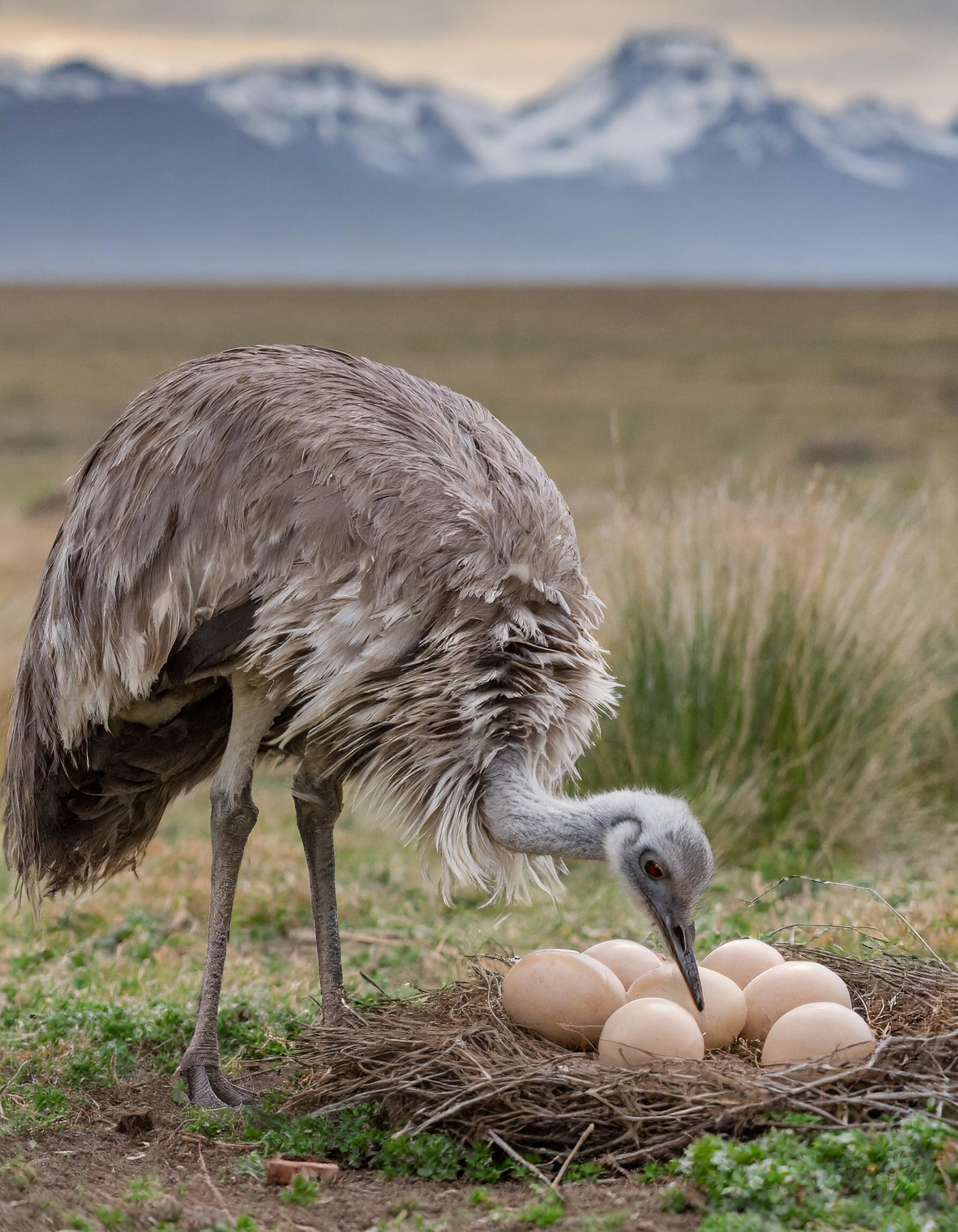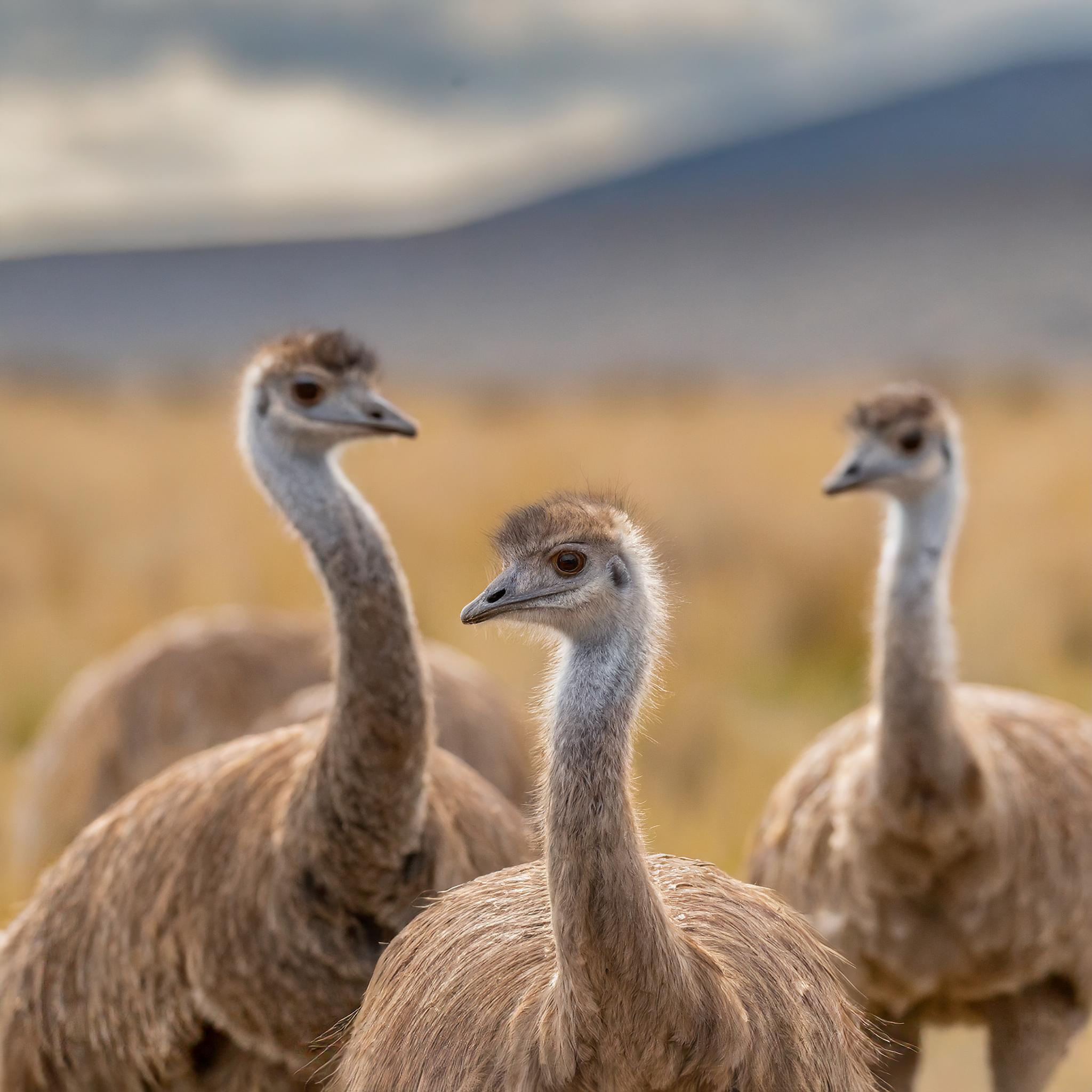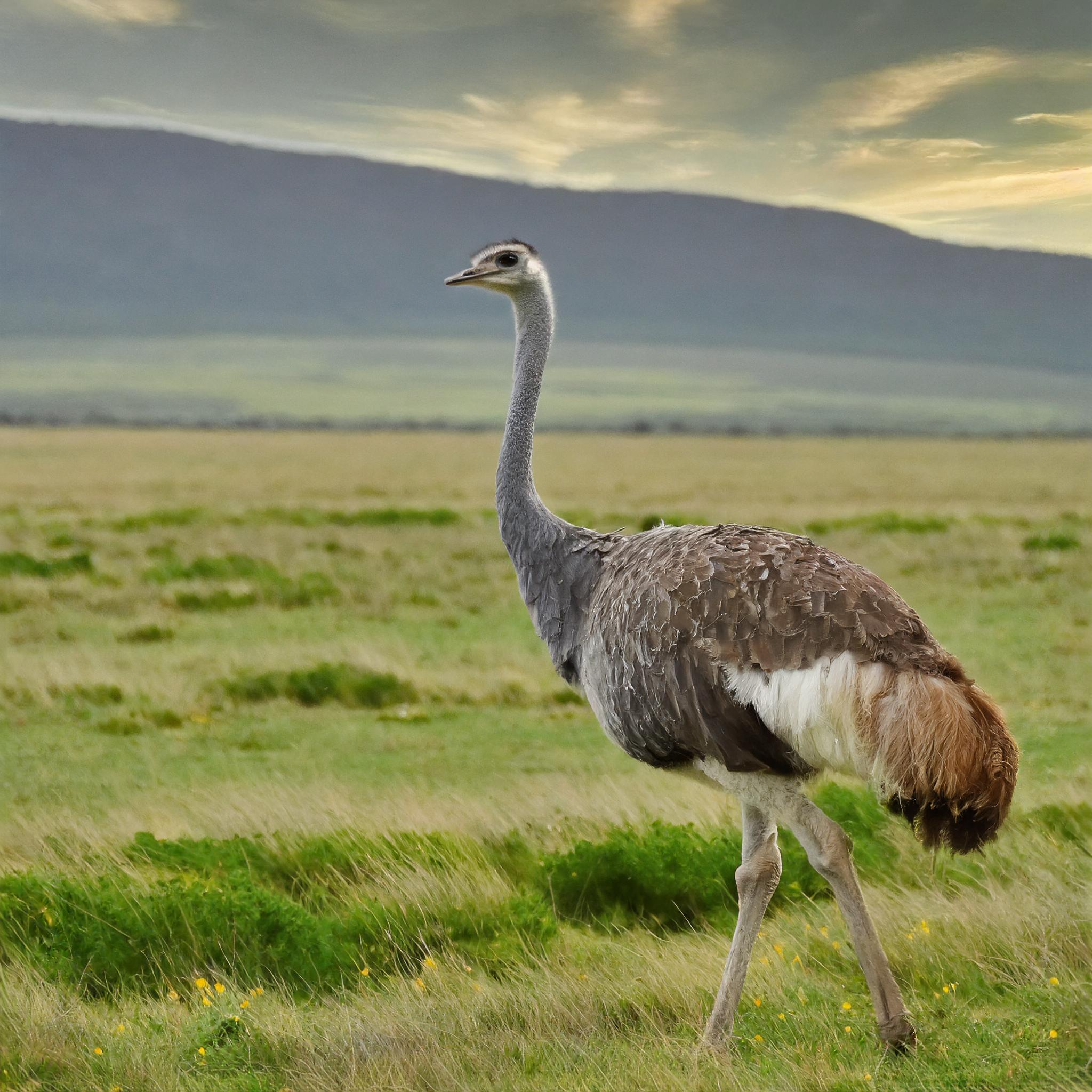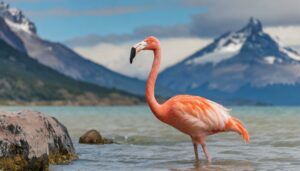The rheas, native birds of the vast steppes of Patagonia, demonstrate remarkable rhea survival in Patagonia through their anatomical and behavioral adaptations. These adaptations enable them to thrive in one of Earth’s most challenging environments. Below, we explore these giants of the steppe and their survival strategies.
Physical Adaptations for Survival
The dense plumage of the rhea provides significant insulation against the extreme cold of Patagonia, crucial for their survival. Their specialized feather system traps warm air, acting as an effective thermal barrier. Additionally, their long, strong legs are designed not only for speed but also to cover great distances in search of food, minimizing their exposure to harsh conditions.
Patagonian Ostriches Video
Behavioral Survival Strategies
Rheas are sociable animals that often form groups for foraging and protection against predators, enhancing their survival prospects in Patagonia. During the breeding season, the male rhea shows exceptional paternal behavior, incubating up to 50 eggs from several females and safeguarding the chicks post-hatching.

Conservation Efforts for Rheas
Despite their significant adaptations, rheas face threats from habitat loss, poaching, and food competition with livestock. Conservation efforts are vital, involving both local and international support to protect these birds and preserve Patagonia’s biodiversity. For a deeper insight into rhea adaptations, visit Animalia.bio.
Understanding Patagonian Rheas
The resilience of rheas in Patagonia underscores the diversity of life and the importance of conservation. Protecting these species ensures a sustainable future for both wildlife and human communities.
Rhea Curiosities
- The Patagonian rhea can reach speeds of 60 km/h, perfectly adapted to its environment. More about its speed at ExpertoAnimal.
- Standing up to 150 cm tall and weighing about 25 kg, its plumage camouflages well within the steppe.
- As omnivores, their diet includes everything from plants to small animals. Learn more at ExpertoAnimal.
- They are primarily found in the open scrublands and steppes of Argentine and Chilean Patagonia. Geographic details at Animalia.bio.
- Although rheas have wings, they cannot fly; however, their strong legs allow them to escape predators effectively. More details at ExpertoAnimal.
- They play a crucial role in the ecosystem by dispersing seeds and controlling insect populations.




